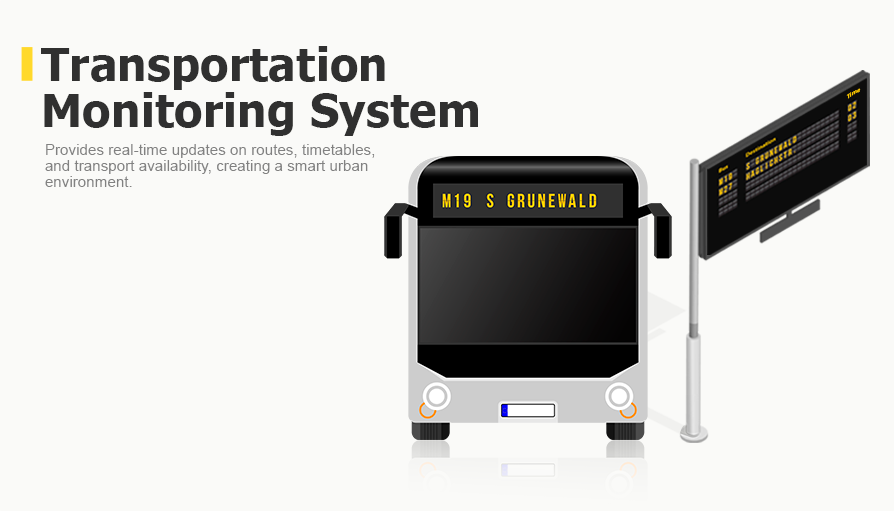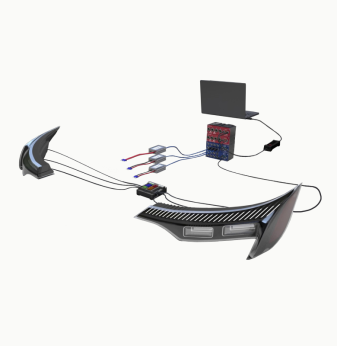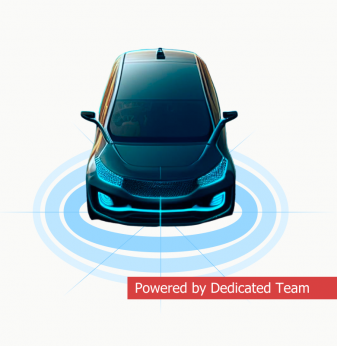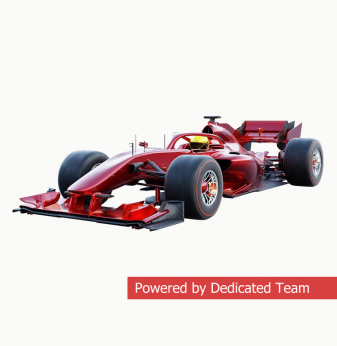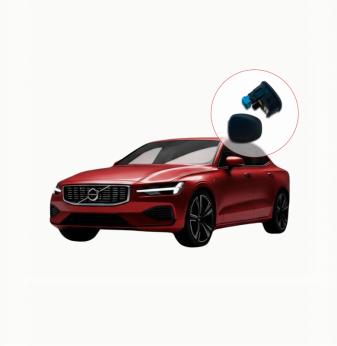Transport Monitoring System Development
Project in Nutshell: we developed a modern transport monitoring platform that provides real-time route information, enhances accessibility for people with disabilities, and optimises energy consumption. Our solution empowered transport operators to deliver a high-quality passenger experience while contributing to a more sustainable urban environment.
Client
A European manufacturer of digital information systems.
Challenge
We were tasked with developing a complex transport monitoring system to visualise routes for buses, trams and trains. The goal was to provide passengers with real-time updates on routes, timetables, transport availability and relevant advertisements, improving accessibility for people with disabilities.
Solution
1. Software Development
To address the challenge, our project incorporated features to create a smart urban environment and optimise accessibility for all passengers, including people with disabilities.
The project was divided into three modules to ensure efficient development and easy customisation. We created three different repositories:
- one for rendering templates,
- another for media handling (implemented in Angular),
- and a third for the orchestrator, which integrated all components into a unified application.
The backend developers on the customer's side worked with data transfer tools. And our engineers received and visualised this data under certain scenarios.
Also, we developed a frontend presentation creator to allow our client to choose and customise templates according to their preferences. It greatly accelerated and simplified the implementation of the visual elements.
Our development team leveraged the MQTT protocol to collect and transmit data. Although unconventional for frontend development, this approach facilitated seamless data transmission and synchronisation across all devices in the transport system.
2. UX Design
One key aspect was optimising font, colour, and brightness for better readability and visibility. We performed user testing to identify the most suitable UI for various visual impairments.
Here are the tasks we've accomplished to achieve this goal:
- Font legibility. We have implemented easily readable fonts with clear lettering and ensured that the font size is large enough for comfortable reading.
- Contrast optimisation. We provide an adequate contrast between the text and the background, enhancing readability, especially for individuals with visual impairments.
- Colour coding and pictograms. To convey information effectively, we used a combination of colour coding and pictograms. This approach offers multiple cues, improving comprehension for all users.
- Testing colour choices. We tested the chosen colours using tools simulating various colour vision impairments. This step ensured that the information remained distinguishable regardless of colour perception.
- White space utilisation. We carefully incorporated ample white space between elements to enhance focus and reduce visual clutter, making a more user-friendly interface.
3. Software Optimisation of Energy Consumption
Another element of our solution was the integration of software optimisation techniques to enhance energy efficiency. We have applied the following approaches and tools:
- Dynamic Frequency Scaling (DFS). Our software intelligently adjusts the clock frequency and voltage of the processor based on workload demands, resulting in optimal energy consumption.
- Sleep modes and power states. We strategically employed idle component sleep modes and power states during periods of low activity to minimise power consumption without compromising responsiveness.
- Data aggregation and compression. We significantly reduced network utilisation and overall power consumption by employing data aggregation and compression techniques while maintaining data integrity.
- Predictive analytics and machine learning. Our transport surveillance system utilises predictive models and machine learning algorithms to forecast traffic patterns, optimise route planning, and dynamically allocate resources based on predicted workload, enabling proactive management.
- Intelligent task scheduling. We implemented advanced scheduling algorithms like earliest deadline first (EDF), rate-monotonic scheduling (RMS), and energy-aware scheduling algorithms to consolidate computations, minimise idle times, and maximise resource efficiency.
- Energy profiling and monitoring tools. We leveraged powerful tools such as PowerTOP, Intel VTune Amplifier, and ARM Energy Probe to perform real-time energy profiling, identify energy hotspots, and uncover optimisation opportunities.
- System-level power management. Our approach encompasses dynamic voltage and frequency scaling (DVFS), clock gating, adaptive power management, and power-aware caching strategies at the system level, resulting in efficient power utilisation and improved overall performance.
Business Value
The transport monitoring solution developed by Promwad can help our client improve its market presence, by combining real-time route information, comprehensive accessibility improvements and energy-efficient software optimisation. Introducing a route information visualisation platform from a transport operator's perspective will improve passenger service and enhance promotional opportunities. It also contributes to a smarter and more inclusive urban environment.
More of What We Do for Public Transport:
- People Counting for AI-Powered Transportation: a blog post about our solutions to monitor seat occupancy and passenger flow in public transport.
- Upgrading Traction Drive Controller for Subway: a case study on selecting new components for an outdated hardware with minimum firmware changes.
- Communication and Navigation Unit for Railways: a case study on the design of a universal hardware and software system for passenger and freight trains.

